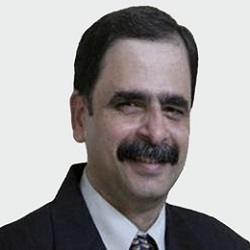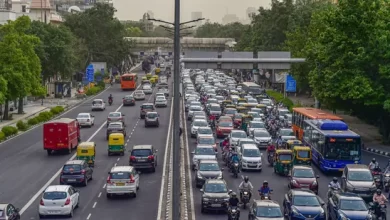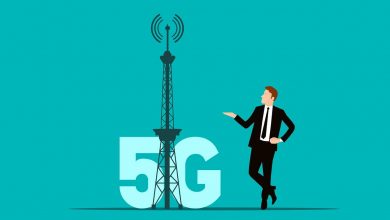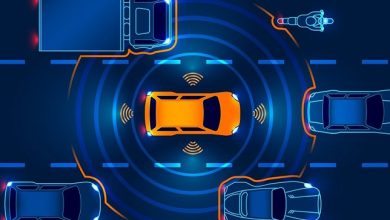Artificial Intelligence and Machine Learning for Vehicle Engineering

The invention of the wheel revolutionized the concept of mobility for the entire human race. This gave birth to the car in 1886 and only later in 1908, was this vehicle available to the masses. The ‘wheel’ generated hope in terms of rapid movement and the car brought controls like comfort, pleasure of driving, and of course – light! Being in the possession of a car was a luxury till only a few decades ago!
When the technology is couples with car designing, it gave rise to Super Mobility that progressively made more complex and reliable machines which became increasingly easy to manoeuvre.
With technology going up in leaps and bounds there was not an iota of doubt that this automobile would to transform into Smart Mobility Vehicle.
Future Mobility will be with the advent of latest technology; Electric, Connectivity, Internet-of-things (IoT), Cloud Computing, Artificial Intelligence (AI), Machine Learning (ML), Deep Learning (DL). Today there are many innovative features that enhance the car & the ecosystem for Electric Vehicle, Autonomous Vehicle and Car Sharing.
In towns and cities, there is a dire need of sustainable solutions of car sharing such as combined multiple modes of transportation including private cars, public transport, robo-taxis / shuttles, micro-mobility and cycling, in order to address the problem of congestion, pollution and quality of life.
Refer Figure 1: Technology Drivers, Transforming Automotive Industry clearly questions “WHO NEEDS BASIC MOBILITY?”. Technology Drivers are pushing the Ecosystem to get it transformed into a Value Chain for OEM’s. Stakeholders; Vehicle manufacturers, Technology providers, Govt. authorities and many more to have strategic plans in place to provide effective solutions. Overcoming hurdles, aggressive predictions are being made for meticulous planning, sagacious investments and execution methodologies.
Figure 1: Technology Drivers, Transforming Automotive Industry
Artificial Intelligence and Machine Learning
Artificial intelligence describes the work processes of machines that would require intelligence if performed by humans. The term ‘artificial intelligence’ thus means ‘investigating intelligent problem-solving behaviour and creating intelligent computer systems.
Artificial Intelligence can be divided into 5 categories;
• Machine & Deep learning
A set of algorithms used to model the high level abstraction of data, monitored and evaluated continuously. A single mistake can be captured and resolved automatically.
• Industrialization
Robots have dominance over the Manufacturing, Assembly and Production. They work effectively, efficiently and reliably.
• Digitization & Data Processing
Data recording and processing has been phenomenal over the years. Traditional activities are no longer effective and scraped. Data management software’s will create database for further processing.
• Micro & Mega Economies
With the advent of Web-based Networking techniques, stakeholders are able to manage the businesses in the most efficient way. Various applications are being developed and used to run on the online platforms.
• Autonomous driving
No human interventions. Vehicle runs using sensors, navigation techniques and self-governing capabilities.
Hence, Artificial Intelligence will lead to redefine business models for the products and systems. This affects both; Product and Service sector as well the whole eco-system on which the businesses will run. The eco-system, Cyber Physical Systems (CPS) into production and logistics and Internet of Things (IoT) are the blood and vessels of the businesses. CPS is the data bases and information sharing platform between humans, machines, products, objects and information and communication technology systems.
In Vehicle Engineering, automatization has four levels; first the production is controlled by machines configured by humans, second, real-time production is the core feature, third is a decentralization and forth is industrialization where NO human intervention. There are economic benefits; reduced production cost, better presence in competitive market.
The following Figure 2: The trends shaping the Auto Industry from now to 2030 describes, how AI & Machine Learning is playing a very important role.
Figure 2: The trends shaping the Auto Industry from Now to 2030
Source: Oliver Wyman Analysis
Here, I would like to discuss three major applications of using AI & ML for Vehicle Engineering,
1. Predictive Maintenance
Automotive predictive maintenance software with online support system based on Microsoft Azure cloud services can be developed for vehicles that processes requests for appointments and syncs drivers to the nearest dealer services.
The online system also notifies drivers by phone message or email about the need to check parts that have exact maintenance schedules stated in the vehicle specifications, which are synchronized with the online system.
The Machine learning algorithms will recognize for example:
• Starter motor malfunctions
• Drop of pressure in the fuel pump
• End of a battery’s service life
It is possible to develop a vehicle predictive maintenance solution based on machine learning algorithms that collects data from steering and braking systems as well as from the starter motor, battery and fuel pump and relays the information to the cloud for analysis and diagnostics.
Few indicative steps for a predictive maintenance algorithm for battery life:
• In-car monitoring system checks battery status
• Data is transferred to the cloud
• Cloud-based ML algorithm predicts that the battery will run low
• System processes all inputs and prepares advice to the driver
• Notification system sends a message to the driver with instructions
• Driver takes action based on the recommended instructions
2. Pedestrian Tracking & Collision Prediction
Urban populations are growing exponentially alongside the number of personal and public transportation, and last-mile delivery vehicles. These vehicles share increasingly crowded streets with pedestrians and cyclists, who are the most vulnerable road users. Globally, pedestrians accounted for 25% of road fatalities in the year 2018.
Besides street congestion, blind spots of large buses and heavy vehicles are another cause of incidents. Drivers must manoeuvre quickly and accurately while staying alert to any nearby movement. Workers on foot can also be exposed to potential harm on industrial storage sites from forklifts. With a full load completely blocking the view, forklift drivers may have more blind spots than areas of clear vision.
All these pedestrian safety issues can be addressed through an AI pedestrian collision prediction module.
It is possible to develop a pedestrian collision prediction module which analyses data about the position of pedestrians, their predicted locations, and road coordinates.
The module comprises of the following components:
• Pedestrian detection
• Pedestrian trajectory prediction
• Road segmentation
• The pedestrian collision prediction module itself
Pedestrian detection is conducted with the Realtime Object Detection algorithm. The module for pedestrian trajectory prediction with Kalman Filter obtains the speed and velocity of a pedestrian from the detection module to predict their motion. Then the pedestrian detector searches for the best-match appearance to update measurements. The output of the previous calculation is an input for the next one. The result of the Kalman filter is an adjusted pedestrian trajectory.
The Road segmentation module distinguishes driving lanes from the sidewalk and outputs images with labelled road pixels. The module is usually handled by a Convolutional Neural Network (CNN), a Deep Learning Methodology.
The Pedestrian collision prediction module calculates the probability of a collision using the coordinates of a pedestrian bounding box, which are predicted and obtained from the object detector paired with the Kalman filter, and the road coordinates from the road segmentation module. If these coordinates of a pedestrian bounding box do not intersect with road coordinates, the vehicle and pedestrian collision is of zero-probability. In case of an intersection, the collision probability equals the ratio of the distance to the predicted pedestrian location and the distance of detected road available for the car.
Active safety technology for preventing pedestrian collisions is important to protect vulnerable road users and move toward zero-traffic-accident society. Using AI and ML solutions, OEMs built intelligent vehicles that can perceive and react to road conditions up to 99.8% which is better than human drivers.
Being an extra pair of eyes, a pedestrian collision prediction module addresses the challenge of monitoring hazardous blind spots for drivers of both private cars and large vehicles manoeuvring in narrow lanes and around people on foot. Once the possibility of hitting a pedestrian is detected, a driver will receive a visual and audio alert, thus getting more time to react. If the situation is defined as critical, the brakes will be applied automatically.
The advanced pedestrian trajectory prediction module will support automakers in enhancing the safety parameters of vehicles in urban, rural, and industrial environments. By equipping fleets with a pedestrian collision prediction module, companies will reduce incidents and associated costs and, most importantly, save lives.
3. High-Definition Maps and Cloud Data Platform for Autonomous Driving
One of the major requirement for Fully Automated Driving (FAD) is 3D HD Maps, the creation of the maps i.e. eliciting source data to creating and publishing the maps themselves. AI can support in this activity. The map development process is sequential and happens in five major stages:
- Real-time streaming perception
An Edge Perception stack is developed that allows for HD map observations and crowd-sourced updates using vehicle-mounted sensor systems. The process involves detecting road features in video streams in real time. This dynamic data is then used in the development of self-healing maps. In case of any changes on the roads, maps are updated automatically, and the new map data is delivered to end users in real time.
- Data collection
To build detailed and credible maps for navigation systems and custom solutions, accurate information on road attributes needs to be collected from around the globe. Data is gathered from mobile cameras, sensors, and GPS devices on the road to locate traffic lights, signs, poles, stop lines, lane markings, roadside barriers, junctions, etc.
- Data aggregation, processing, and filtering
Engineers handle massive datasets from a variety of sources, including from core maps and on-vehicle sensor systems. All road image data is aggregated, processed, and filtered via a streaming file system for further validation and intelligent analysis using machine learning models. All data can be consumed in an NDS (Navigation Data Standard) format to avoid vendor lock-in and ensure interoperability across systems.
- 3D map creation and maintenance
Live 3D maps are compiled & updated that enable precise positioning for lateral and longitudinal control of vehicles. These multi-layer maps contain details at several levels (roads, lanes, lane groups and individual lanes, geometry) and are constantly enriched with incoming information on new road attributes such as signs, markers, crosswalks, bicycle lanes, and objects.
- Map delivery
Data-intensive HD maps are generated and delivered to customers online as a geographically tiled and functionally layered data service suitable for direct-to-vehicle and OEM cloud consumption. These maps are also an indispensable source of data for client’s many in-vehicle software development programs.
There would be many such tests and a huge number of algorithms running in the vehicle environment. All the stakeholders; Vehicle manufacturers, Technology providers, Govt. authorities, Academicians have their own share of work to support this humongous initiative.
Indian Research Universities / Institutes have a pivotal role to play. Currently, there is huge GAP between ‘what we learn’ and ‘where we apply’. Industry and Service sectors in India would require a gross incremental workforce of > 1.12 billion by 2050; India could potentially emerge as a global supplier of skilled manpower. Refer Figure 3: Workforce requirements by 2050 and Gap between Industry & Academics. Going ahead the organizations anticipate a huge shortfall of qualified and skilled employees. Since business strategies are not clear, there is a need to procure, control, retain and nurture talent. This may be the key to combat competition.
Author:

Dr. Ajay Palkar
Head of Electrical & Electronics
ŠKODA AUTO Volkswagen India
Ajay is an Industry recognized thought leader over 30+ years of Product design, Development & Management consulting experience. An accomplished, performance driven & focused professional having rich experience in Engineering & Management mainly focusing Vehicle Integration (Mobility, Electrical & Electronics), Systems Engineering, Project Management, Strategic Planning & Business Development in Automotive, Defense, and Industrial Automation & Instrumentation field. His core research area is Product Life Cycle & Obsolescence, Strategic
Management and Project Management. He has published numerous papers on Technology & Marketing Management, various patents & memberships on his name. Ajay is currently associated with SKODA Auto Volkswagen India Pvt. Ltd. as Head – Electrical & Electronics. In the past he was associated with esteemed organizations such as Mahindra & Mahindra, Tata Motors, Bennett, Coleman, & Co. Ltd., main roles & responsibilities involved Solution Architecture, R&D – Systems Engineering & Technology, Strategic Management & Pre-sales.
Published in Telematics Wire





